Under The Radar
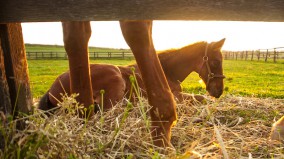 Somewhere in the world, the 2028 Olympic champion is a foal out in a field. He’s ewe-necked, sickle-hocked, downhill and shaggy, with a club foot and a chunk of mane missing, because his buddy chewed it off.
Somewhere in the world, the 2028 Olympic champion is a foal out in a field. He’s ewe-necked, sickle-hocked, downhill and shaggy, with a club foot and a chunk of mane missing, because his buddy chewed it off.
Somewhere in the world, there’s a young horse that everyone says is too short to make it big. In three years, he’ll be jumping the standards, but right now he’s fat and short and no one is paying him any mind.
Somewhere in the world there’s a 7-year-old who can’t turn right, and a 10-year-old who has not shown the ability to put more than two one-tempis together without losing it, and a 14-year-old who hasn’t yet reached his peak, and all of them will be at the next Olympic Games.
Read the rest at The Chronicle of the Horse!
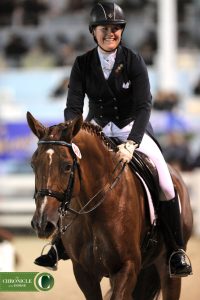 I like the quiet moments at the shows. I like the mornings especially, when I come to feed Ella and clean her stall before heading out to the farm to work the rest of the horses. I like the stable compound before the masses descend, when it’s just quietly eating and breathing horses and a handful of riders or grooms going about their morning chores.
I like the quiet moments at the shows. I like the mornings especially, when I come to feed Ella and clean her stall before heading out to the farm to work the rest of the horses. I like the stable compound before the masses descend, when it’s just quietly eating and breathing horses and a handful of riders or grooms going about their morning chores.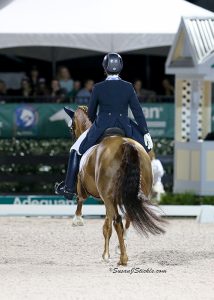 I was making my list of goals for 2017, and on the list (along with “eat like an adult,” “sleep past 4 am” and “take a cooking class to improve my knife skills”) is to get a 7 or better on the canter half pass zig zag in a CDI Grand Prix. I understand the movement, I teach others how to ride the movement… and I myself, on Ella, can’t seem to ride the movement in the ring. I get the count right, I get 6 or 6.5, and it’s fine, it just can be so much better, and it really needs to be better, to get the scores I want.
I was making my list of goals for 2017, and on the list (along with “eat like an adult,” “sleep past 4 am” and “take a cooking class to improve my knife skills”) is to get a 7 or better on the canter half pass zig zag in a CDI Grand Prix. I understand the movement, I teach others how to ride the movement… and I myself, on Ella, can’t seem to ride the movement in the ring. I get the count right, I get 6 or 6.5, and it’s fine, it just can be so much better, and it really needs to be better, to get the scores I want.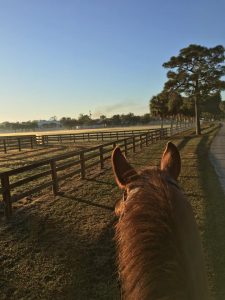 December 1: It’s official! Nine horses will be going to Florida, to a brand-new barn that we’ll have all to ourselves. Awesome. I’ll bring down one working student—conveniently also named Lauren—and hire someone local to do stalls for us. It’ll be a lot of work, but it’ll be OK.
December 1: It’s official! Nine horses will be going to Florida, to a brand-new barn that we’ll have all to ourselves. Awesome. I’ll bring down one working student—conveniently also named Lauren—and hire someone local to do stalls for us. It’ll be a lot of work, but it’ll be OK.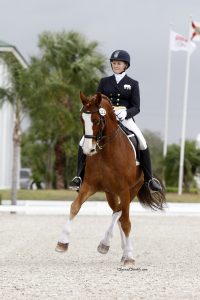 Danny is 8 this year. He’s always been wildly talented; I bought him in June of his 6-year-old year, by which time he could do big clean changes, a few half steps and a passagey trot that, while all will be handy one day, I had to basically sit down and take out of him because he’d learned a mechanism that wasn’t what I wanted at Grand Prix, one where he pushed his big powerful hind legs out behind and made them slow, instead of really sitting and being snappy. But more importantly, what I loved about him at 6 was that I could take a hold of the reins, clamp my legs on, pester him a bit with a stick, and not get dumped.
Danny is 8 this year. He’s always been wildly talented; I bought him in June of his 6-year-old year, by which time he could do big clean changes, a few half steps and a passagey trot that, while all will be handy one day, I had to basically sit down and take out of him because he’d learned a mechanism that wasn’t what I wanted at Grand Prix, one where he pushed his big powerful hind legs out behind and made them slow, instead of really sitting and being snappy. But more importantly, what I loved about him at 6 was that I could take a hold of the reins, clamp my legs on, pester him a bit with a stick, and not get dumped.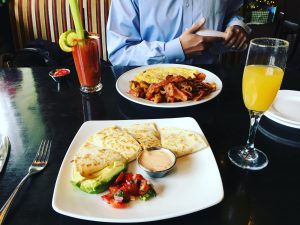 I’m terribly careful with my horses and their schedules. I’m a little bit of a nut about making sure they get down time, not just for their bodies, but also for their brains. They’re all individuals, of course, and some can handle more shows and more work than others. But in my time with Ella I’ve learned that while she’s a good girl and she’ll work hard for me, she’s at her best when she shows about once a month, and also only for a few months at a time.
I’m terribly careful with my horses and their schedules. I’m a little bit of a nut about making sure they get down time, not just for their bodies, but also for their brains. They’re all individuals, of course, and some can handle more shows and more work than others. But in my time with Ella I’ve learned that while she’s a good girl and she’ll work hard for me, she’s at her best when she shows about once a month, and also only for a few months at a time.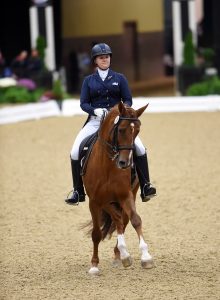 I’m sitting in my PJs recovering from a terrific trip to Kentucky for the U.S. Dressage Finals, sipping coffee, listening to my mountains of laundry churn away, packing up my show clothes for the trip to Florida in January, and looking back on a wonderful year.
I’m sitting in my PJs recovering from a terrific trip to Kentucky for the U.S. Dressage Finals, sipping coffee, listening to my mountains of laundry churn away, packing up my show clothes for the trip to Florida in January, and looking back on a wonderful year.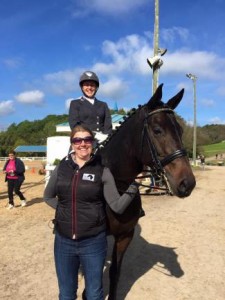 I get asked some form of this question 50 times a year, in lessons, at clinics, via email or Facebook: how do I rise up the levels? What’s the best plan to get from being a lower-level rider to FEI? What path should I follow?
I get asked some form of this question 50 times a year, in lessons, at clinics, via email or Facebook: how do I rise up the levels? What’s the best plan to get from being a lower-level rider to FEI? What path should I follow?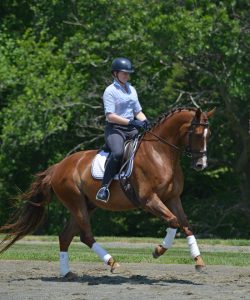 Between Michael giving a clinic at my place a few weeks ago, our Regional Finals two weeks after that, and
Between Michael giving a clinic at my place a few weeks ago, our Regional Finals two weeks after that, and  Devon and I, we go way back.
Devon and I, we go way back.